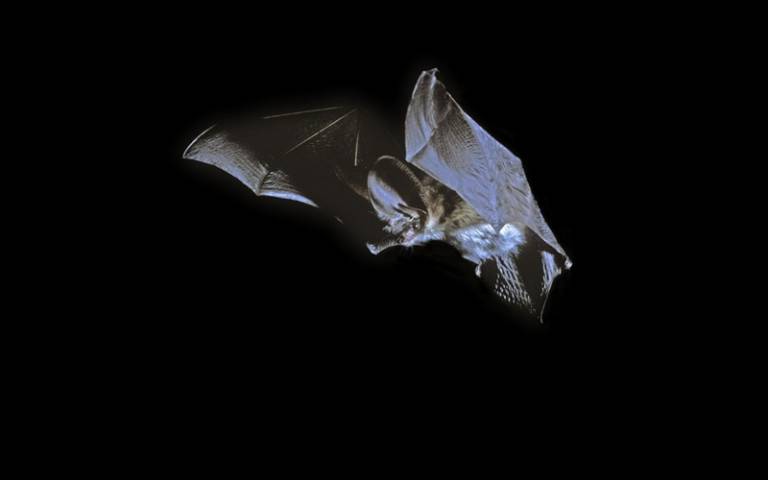A smart approach to biodiversity monitoring
Ecologists and computer scientists at the UCL Nature-Smart Centre are joining forces with urban land managers to devise new ways to monitor bat species across Queen Elizabeth Olympic Park, East London

8 October 2020
Photo credit: Hugh Clark / www.bats.org.uk
As the world’s population grows, so, too, do the pressures on the Earth’s resources and the disruption to our natural systems, habitats and species diversity.
The Nature-Smart Centre at UCL East is a cross-disciplinary hub that brings together world-leading experts, including ecologists, computer scientists, city planners, economists and biologists, to gather evidence on how we can best manage our natural resources for a ‘nature-smart’ future.
The centre is one of the first research initiatives to begin operating within UCL East, the university’s new campus located on Queen Elizabeth Olympic Park in Stratford, east London.
A team at the centre are using the Park’s green spaces as their laboratory to monitor bat populations. “Bat species are a good indicator of the general health of the natural environment in a particular area,” explains Professor Kate Jones, the centre’s academic lead. “They are the top predator of nocturnal insects, so the impact of any changes in land use on the insect species has a knock-on impact on bats.”
The pressures faced by bats, such as agricultural intensification, and habitat fragmentation, are also relevant to many other wildlife species.
““Bat species are a good indicator of the general health of the natural environment in a particular area.”
The team has devised a novel bat monitor – the Echo Box – that records the surrounding soundscape using an ultrasonic microphone. This captures high frequency sounds such as bat calls and converts the sounds into an image called a spectrogram. Computer algorithms then scan the images for possible bat calls.
Fifteen Echo Box sensors are now monitoring across the park. Each Echo Box has a microchip allowing it to process its own data using a mechanism called ‘edge processing’, which drastically reduces the costs of the technology.
“This technology is making biodiversity monitoring much quicker and easier. We are using the data to estimate the biodiversity of bat communities in these urban areas. This will help us understand more about the effectiveness of different types of green infrastructure, such as green roofs, in maintaining biodiversity,” explains Dr Fairbrass (UCL CBER), who leads the Urban Bat Life project.
“Soundscape monitoring, which includes ultrasonics and human audible sound, may provide a future opportunity for monitoring other urban ecological communities at large scales.”
 Close
Close


